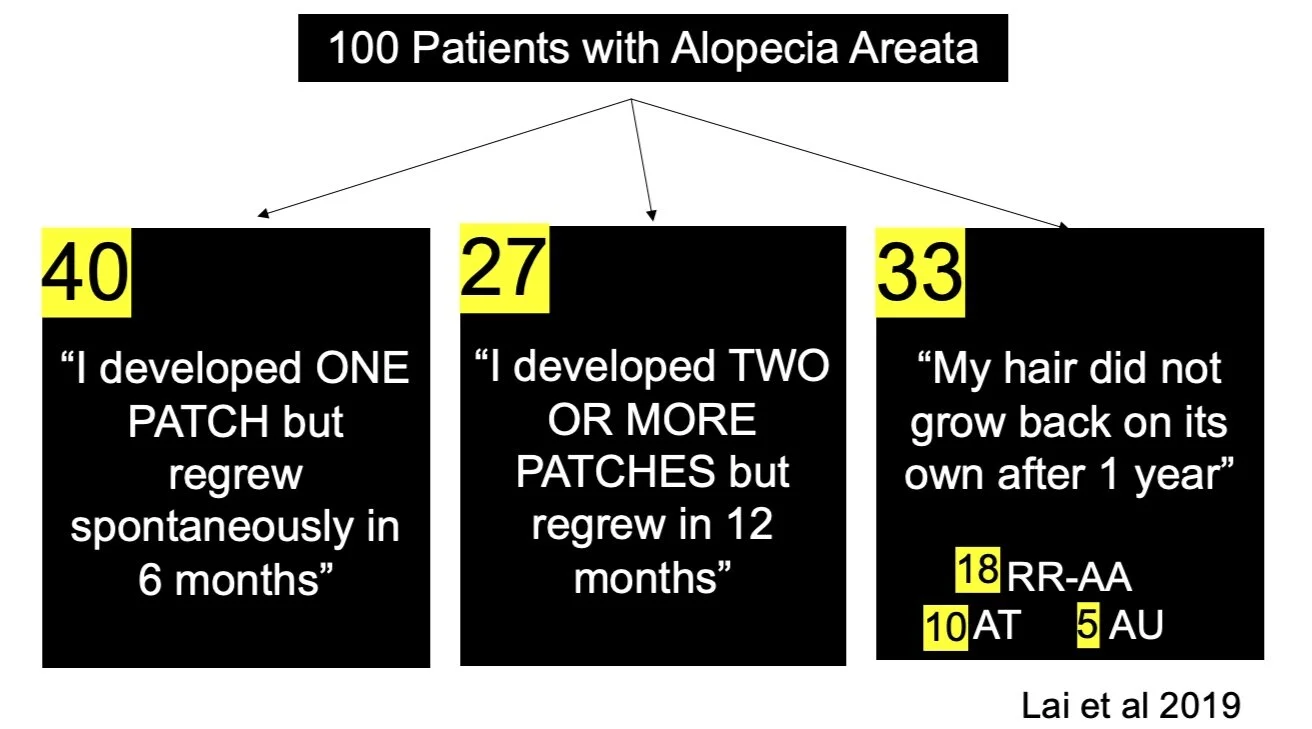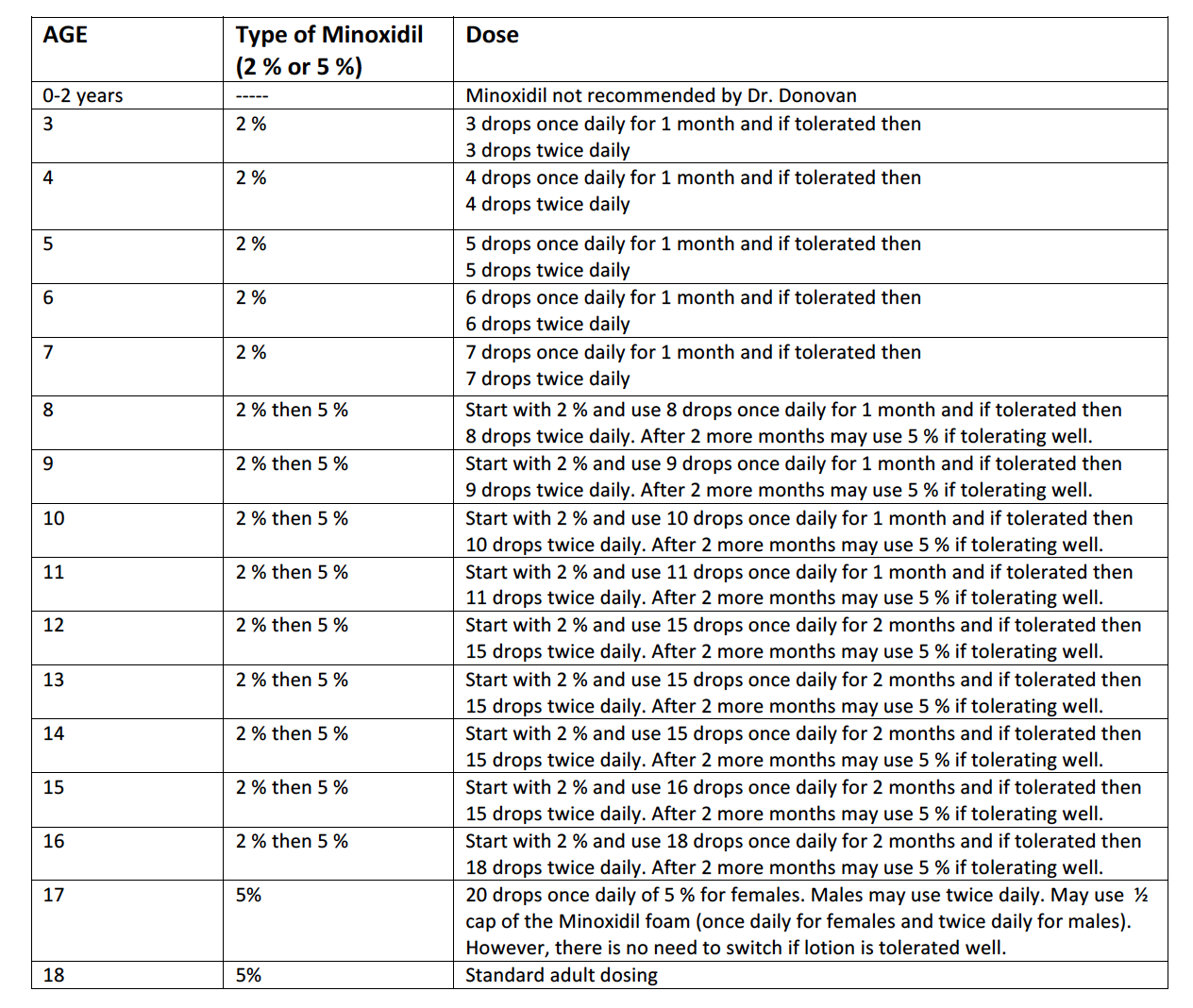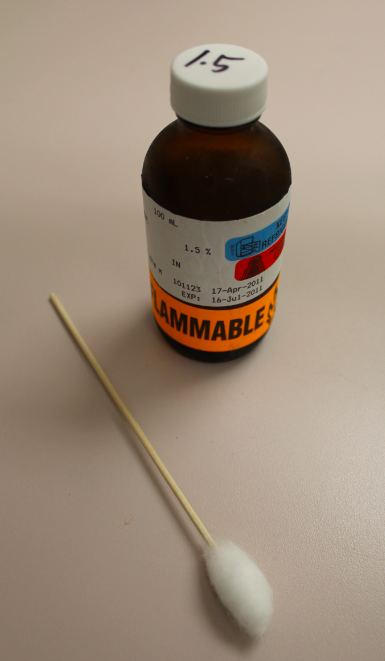Alopecia Areata in Children under 4: Does the amount of hair loss at the time of the appointment predict future loss
Alopecia Areata in Children Under 4: Mild Degrees of Loss Likely to Stay Mild; Moderate/Severe Likely to Worsen
Alopecia areata occurring in young children is known to be associated with lower chances for spontaneous regrowth and recovery compared to alopecia areata in older children and adults. In fact, alopecia areata starting at young ages is known to be one of the recognized poorer prognostic factors.
Castelo-Soccio’s group from Children’s Hospital Philadelphia published an helpful paper in 2019 showing that although young age of onset is generally a poorer prognostic factor, we can provide even more helpful information to parents based on the amount of hair loss the child has at the time of the appointment.
The authors performed a retrospective chart review of 125 pediatric patients who presented to clinic under the age of 4 with Alopecia Areata. Most children under 4 had mild disease severity at the time of their first visit and and for these children it was quite unlikely that progression was going to occur over the next 2 years to a more severe type of disease. In other words, mild AA stayed mild.
In contrast, children with more than 50 % loss at the time of their first visit were more likely to go on to develop more severe disease and worsening hair loss. In other words, moderate/severe AA got worse.
Comments/ Summary
This is a helpful study because it equips hair specialists with information to better counsel patients. Children presenting to clinic with Alopecia Areata generally have poorer prognosis compared to adults. However, children with mild disease are not likely to progress to severe hair loss states - especially over the periods of short term follow up.
Reference
Rangu et al. Understanding Alopecia Areata Characteristics in Children Under the Age of 4 Years. Pediatr Dermatol 2019 Nov;36(6):854-858.
This article was written by Dr. Jeff Donovan, a Canadian and US board certified dermatologist specializing exclusively in hair loss.










